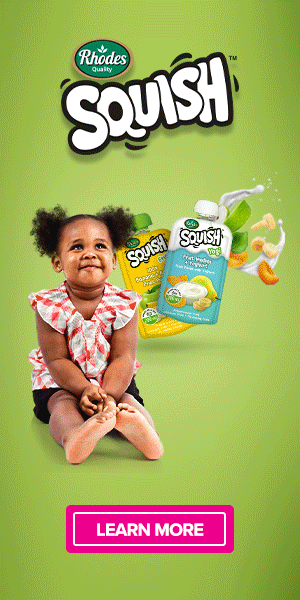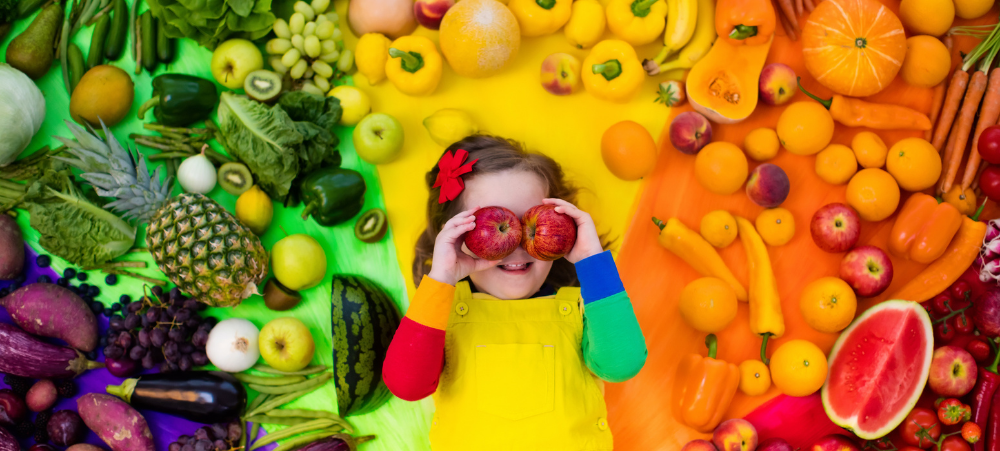The World Health Organization recommends that infants are introduced to solid foods from 6 months, in combination with milk feeds, to help meet their changing nutritional requirements. Soon thereafter, your baby will be eating pureed solids like a pro. And just like your baby progressed from rolling to sitting to crawling and standing, a similar yet less obvious developmental progress also occurs in the mouth as little mouths, often toothless, work out the munching movements needed for more challenging textures of the next exciting feeding journey: finger foods.
When is my baby ready for finger foods?
Did your 8-month-old just launch for your dinner plate? While then it is time to shake things up with finger foods. The American Academy of Pediatrics (AAP) recommends starting finger foods when a child can sit up without support and bring their hands or other objects to the mouth.
These foods should be soft, easy to swallow and cut into small pieces. Some babies may have teeth at this point, some not. Either way, you can still introduce finger foods. You will be surprised at how powerful those little gums chomp away at more solid and textured foods. Watch out for foods that are too small or large as this could cause a choking hazard.
Why must I start finger foods?
Introducing your baby to a variety of foods is important not only for exposure to various tastes and textures but also to encourage adventurous eaters to learn to eat on their own and to master the art of grasping food and objects, which is especially important for a baby’s brain and eye development and coordination. Finger foods are not only important developmentally, but also a useful reminder to recognize a baby’s hunger and fullness cues.
Your child may be hungry if he or she:
- Puts hands to mouth
- Turns head towards mom’s breast or reaches for a bottle
- Puckers, smacks or licks lips
- Has clenched hands
Which foods are good finger foods?
Finger foods should be small, bite-sized, and easy to dissolve in your baby’s mouth. Continue to be wary of foods that pose a choking risk, such as foods that are hard (firm pieces of meat, hard blocks of cheese, raw vegetables, hard candy, nuts), round (whole grapes and olives), chewy (gummy sweets) or sticky (peanut butter).
This is a great time to make the most of your baby’s enthusiasm for food and offer up a variety of healthy foods with fun flavours and different textures, such as:
- Rice cakes or crackerbreads, broken into smaller pieces dipped in any of the delicious Squish 100% Fruit and Veg Purees
- Soft fruit like raspberries or blueberries, cut in half, or chunks of banana perfect for dipping into som Squish Pear, Mango and Yoghurt
- Diced or sliced avocado
- Small blocks of soft cheese like cream cheese
- Scrambled eggs
- Omelette, made with some mozzarella cheese and soft veggies like spinach, mushrooms and onion, cut into blocks
- Well-cooked, soft peas, fresh or frozen
- Small pieces of broccoli florets, steamed until soft
- Small pieces of cubed butternut pumpkin, potatoes, or sweet potatoes, steamed until soft
- Small pasta shapes like tubes or shells mixed with their favourite flavour of Squish 100% Fruit and Veg Puree
- Finely shredded chicken with a side serving of Squish Sweet Potato, Apple and Cinnamon Puree
- Grated cheese
- Small pieces of a healthy treat, like homemade bran muffin or blueberry pancake with a side serving of Squish Summer Berries Puree
- Steamed and flaked fish
- High fibre grains like wholewheat couscous, quinoa, or bulgur wheat, cooked until soft and mixed with avocado or cream cheese
For a convenient and on-the-go snack, why not try Squish?

Squish offers a range of 100% fruit and veg purees and pressed 100% fruit and veg juices. The convenient pouches are well-loved amongst mommies and are perfect for babies from the first introduction of solids, right through the weaning process – from babies to toddlers and beyond.
When feeding your child finger foods, why not offer them a side dish of Squish 100% Fruit and Veg Puree and allow them to dip their bread, vegetables, crudites or fruit into it.
How do I offer up finger foods?
Start with longer, finger-like pieces of foods which are easier to pick up. As your baby masters the art of picking up food with the pincer grip, progress to smaller pieces. The Baby’s tongue is also a powerful muscle in the chewing process. The key is to make sure that the foods are soft enough for them to chew and the pieces are an appropriate size.
At this stage, babies may still not be able to fully feed themselves to meet their high energy and nutrient needs. For this reason, it is important to continue to offer spoon-fed meals, adjusting consistencies from puree to lumpy to match the baby’s new-found finger food skills. Offer up finger foods in addition to these meals, possibly at one or two snack opportunities a day.
It is a good idea to not place out too many pieces at once as overeager little fingers may try to eat all the finger food pieces at once. And just like with the first solid foods, your baby will not be a fan of all finger foods. It may take several attempts so practice patience and enjoy these fun times on the next part of your feeding journey.
The Squish range is made with the best quality ingredients packed in convenient pouches, so parents can rest assured that they you giving your children the best.
No compromise on quality and the brand constantly ensures that all the products are free from preservatives, colourants, flavourings and starch, guaranteeing that the health and interest of your baby is a number one priority.
From the first spoonful of solids, right through the adventurous toddler years, Squish strives to offer you and your child only the very best, filled with 100% fruit and veg, making the weaning transition as easy, possible.
- 5 tricks to get your toddler to eat more fruit and veg - October 24, 2023
- 5 clever ways to make toddler mealtimes less stressful - August 28, 2023
- 5 common mistakes to avoid when feeding your toddler - August 18, 2023





